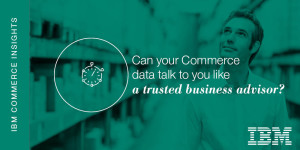What’s the one thing that’s lacking in business culture today that has the potential to bring in more revenue than anything else? I’ll give you one word: trust. It’s not something you can buy with advertising dollars. It has to be earned through the actions of the people in your company, from the executive office all the way to the mailroom. Unfortunately, many people seem to have forgotten the impact that this little 5-letter word (or lack of it) has in their personal and business relationships.
I’ll give you a recent example from LinkedIn — the generic LinkedIn request to connect, followed closely by a sales pitch. I’m sure you’ve received some of those, right? Who hasn’t? Now I’m not objecting to the connection request—after all, LinkedIn is for connecting. Maybe they’re new to the platform and don’t know how to personalize a connection request, maybe they made the mistake of using the mobile app which for some reason doesn’t allow for a personal note. That’s understandable. But connecting with someone just to pitch them (without building a relationship first and developing trust) is inexcusable.
I posted my “new reply” to those types of pitches on Facebook, and it goes like this:
“So you connected in order to simply pitch me… not even a hello, how are you, buy me a cocktail before propositioning me? You don’t even know me, sent me a generic connection request, then when I open the door for you, instead of shaking my hand and getting to know me… you come right out with a sales pitch.
Seriously??? Dude… time to get some relationship building game. Good luck on your next pitch… not interested. Make it a great weekend. “
The post received 42 comments and over 211 likes, and virtually every commenter was in solidarity with me—many having had the same experience.
I don’t know a single person who likes to get pitched via social (or any communication channel) before a relationship is established. Do you? Yet we see this all the time—especially from sales people more interested in meeting quota than doing the work of building rapport.
Rajesh Setty, co-founder and President at WittyParrot, illustrates this concept in his LinkedIn post entitled “The Forgotten Art of Asking Right.”
He hits the nail on the head with this post, using an ingenious, color-coded “Request Spectrum” illustration of the four zones of relationship maturity and where it may (or may not) be conducive to ask for something.
Zone 1 is where you first meet, and the illustration shows the trust-building track along the relationship as you get to know the person, develop rapport, etc.
In my opinion, Raj’s spectrum should be required reading for any sales or marketing class, and it should be built into every organization’s employee guidebook.
Are there some people that will ignore it anyway? Sure. There are lots of folks out there who could win awards on pissing off their co-workers, alienating customers and driving away prospects. It’s a personality thing. However, if more companies ask the right questions on interviews, they could weed out those potential employees who will never “get it.” And by actively teaching this concept to current employees and making it integral to company culture, organizations could scale their relationship-building capabilities both inside and outside the company via both face-to-face meetings, and especially via digital and social channels.
However, I also think that companies must do a better job of building trust with their employees. It’s a two-way street. The key lies in revamping the employee-employer relationship. Employers have to understand that the “buyer’s market” they’re in right now will not always be the case, and even if it is, that attitude is no way to build brand loyalty that can go well beyond time on the job. If you want to build a winning team that stays with you, advocates for you and helps you get ahead as a company, you have to treat that team with respect. Treating employees like a commodity and/or a cost center eventually backfires because it leads to constant turnover, which is counterproductive in the long term.
Another way employers can build and nurture this type of culture is byempowering their employees and recognizing the fact that social connection is an integral part of all of our lives now. Remember that in today’s social world, every person has an extended circle of personal influence and an opportunity to build their own personal “brand.” By helping your employees build that brand rather than squelching individuality, you could build an army of very powerful advocates. Most people, when given the opportunity will advocate for their brands, when they feel good about where they work.
Start thinking of your employees as an investment instead. If you look out for them and help them when they need it, they’ll be there for you when you need them. It can be as simple as creating a nurturing workplace that encourages growth and innovation, versus a culture of fear fostered by so many companies today.
Maybe we can’t teach everyone how to #JustBeNice, but we can definitely do a better job of building trust with our employees and teaching them to do the same with co-workers, vendors and customers.


